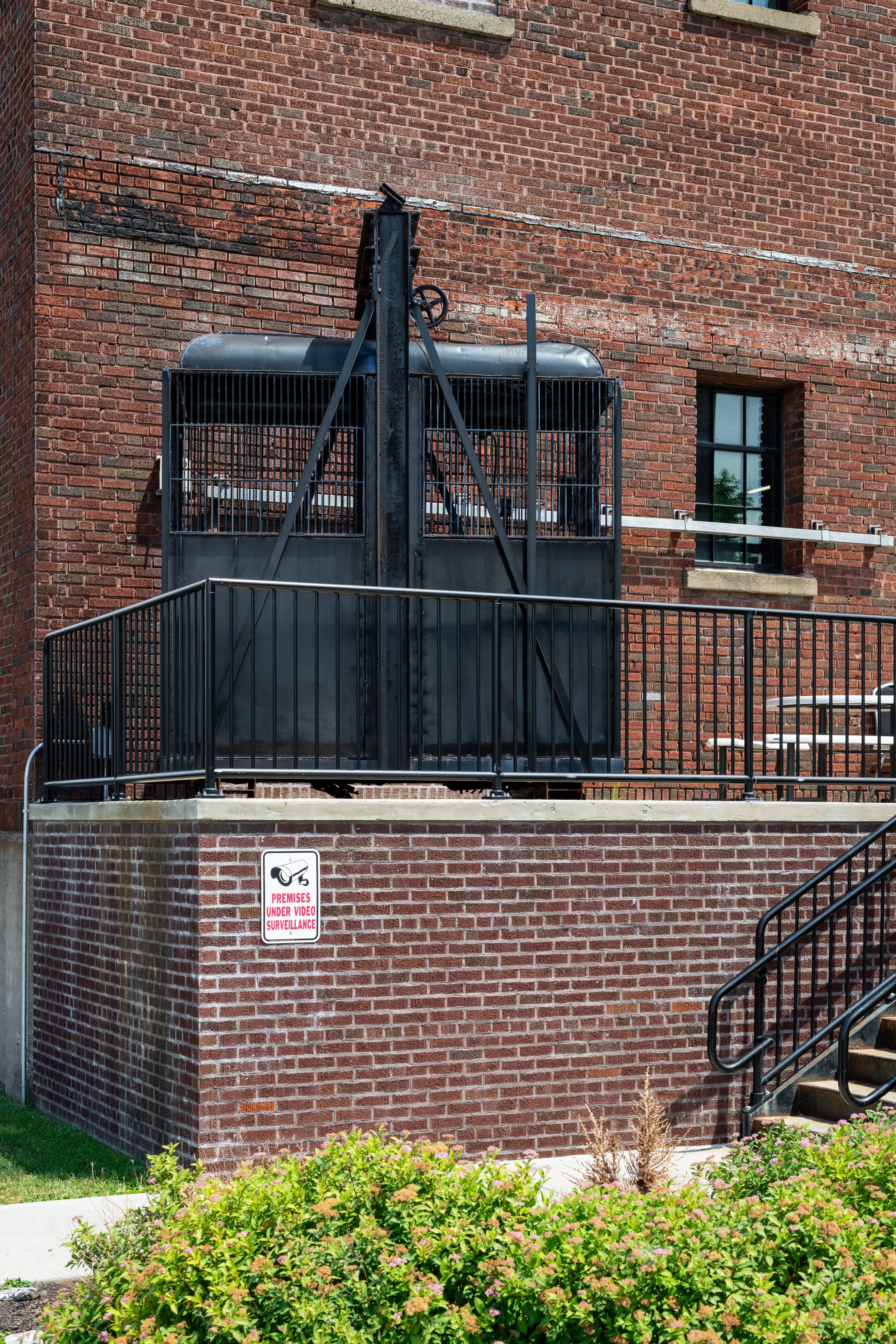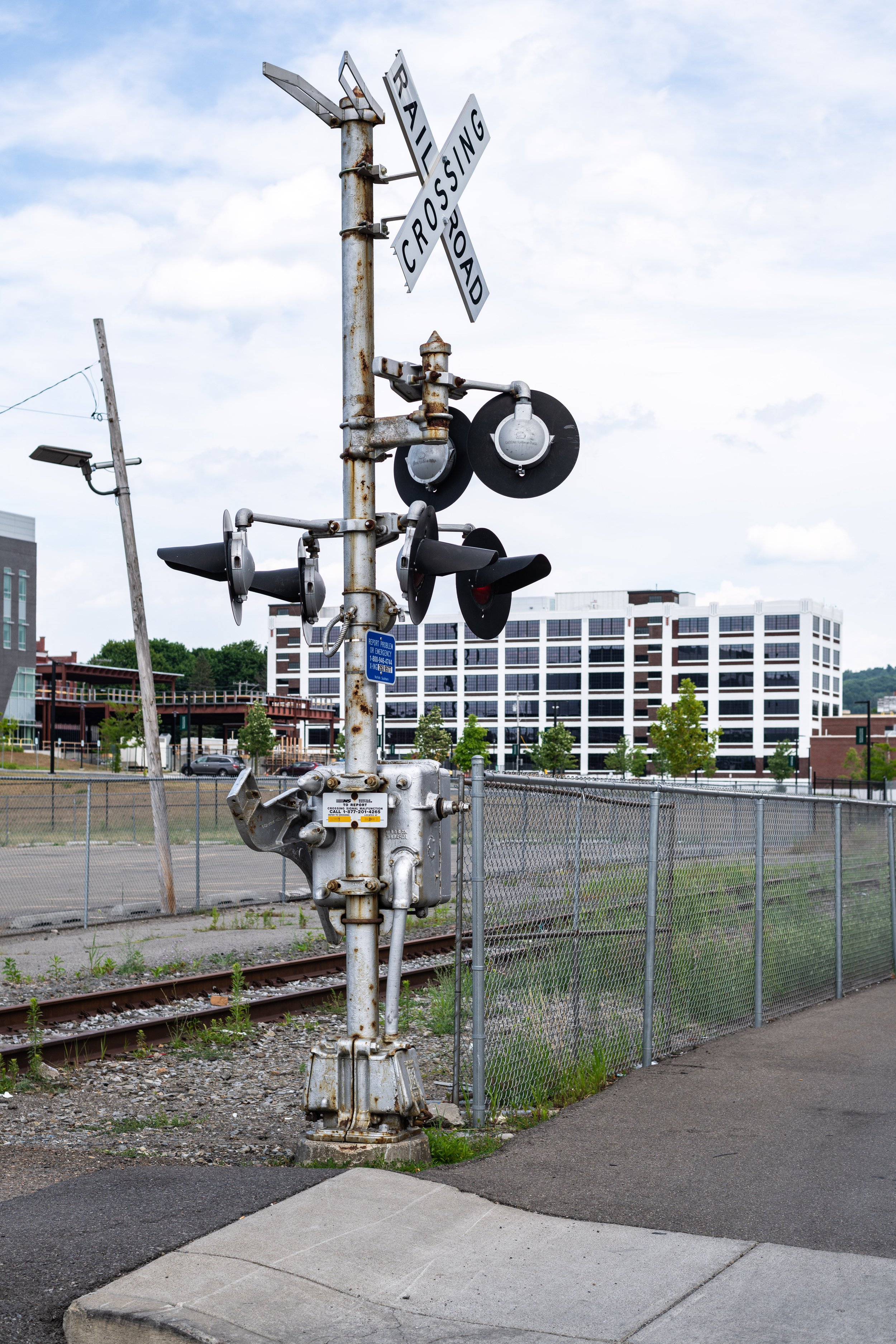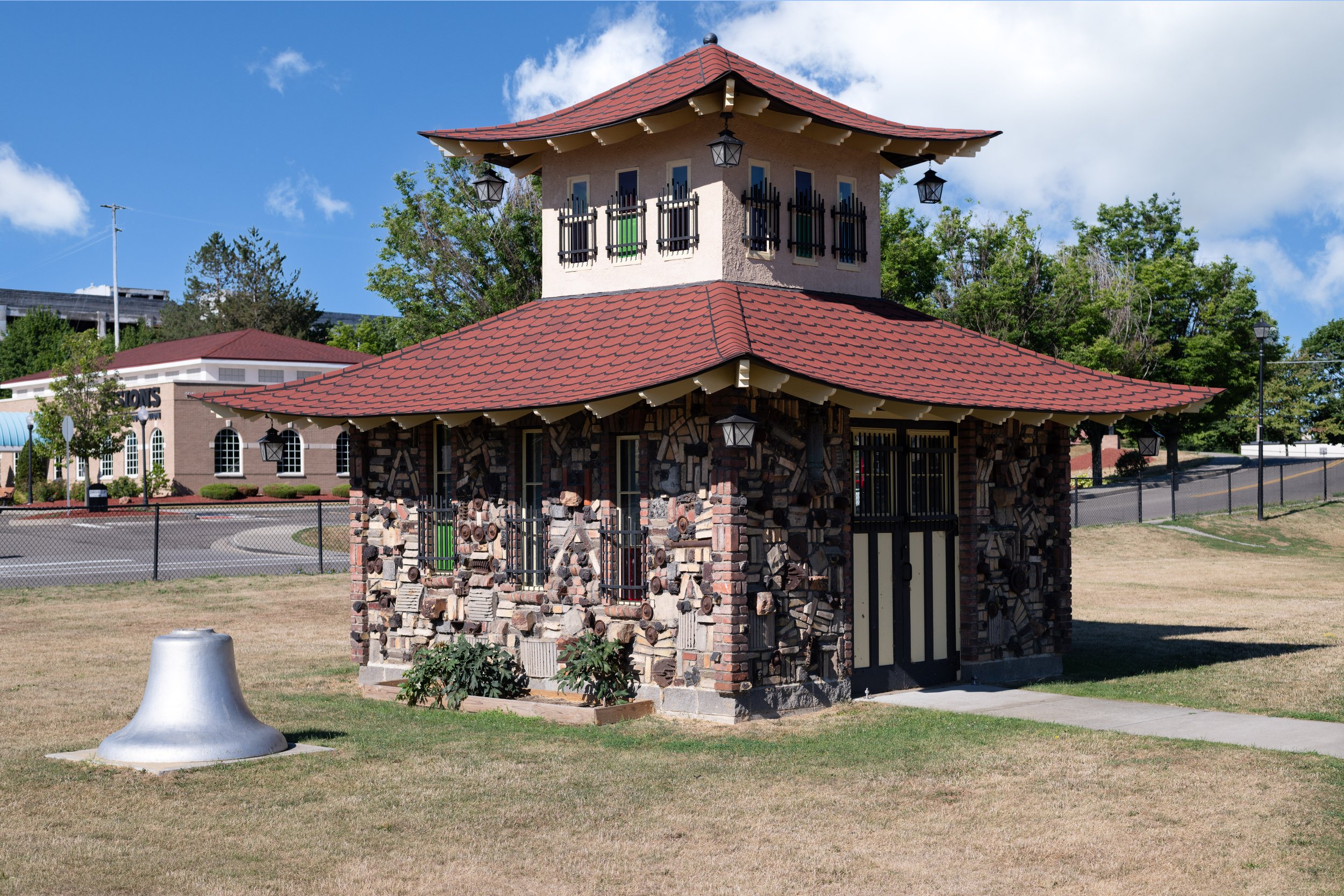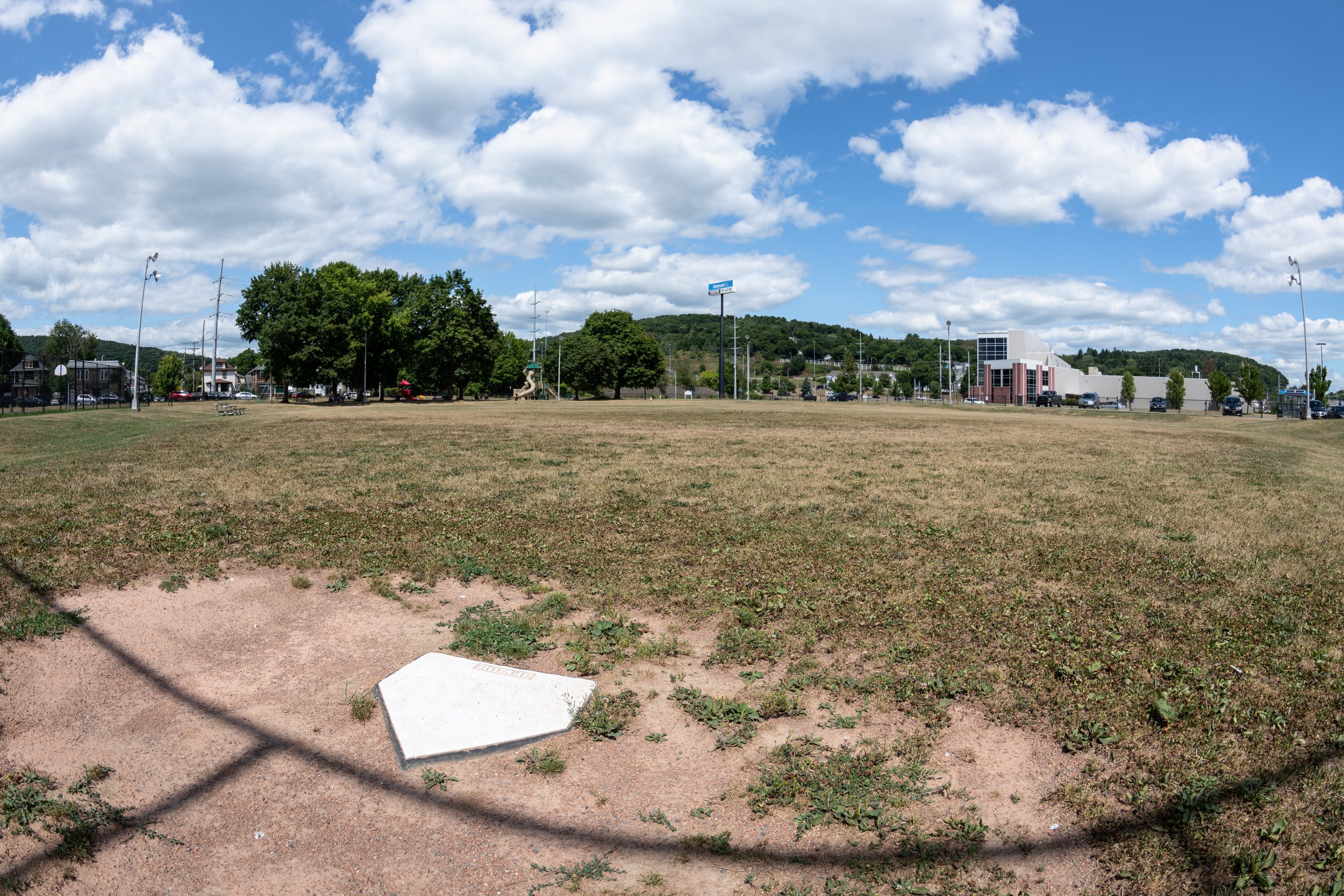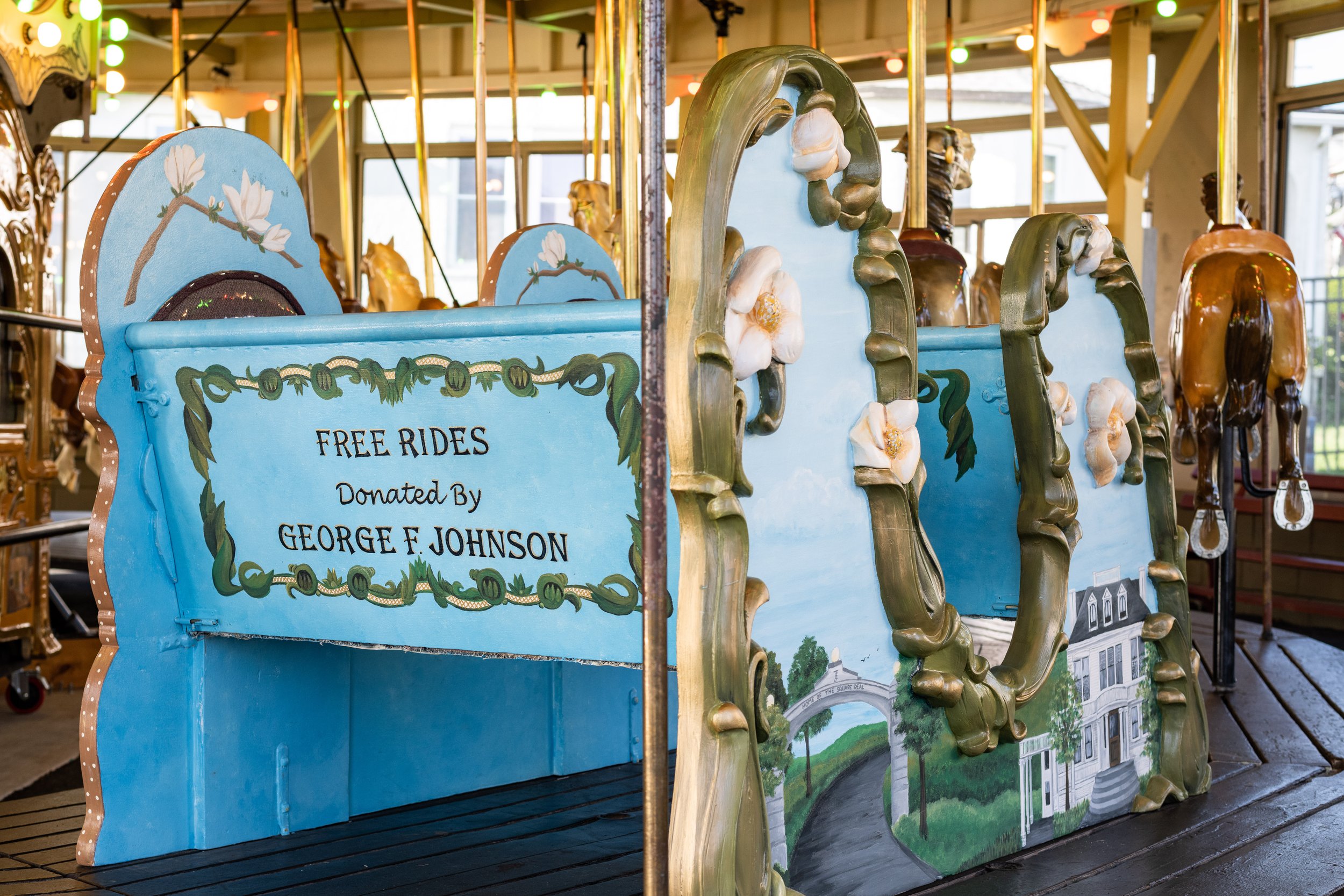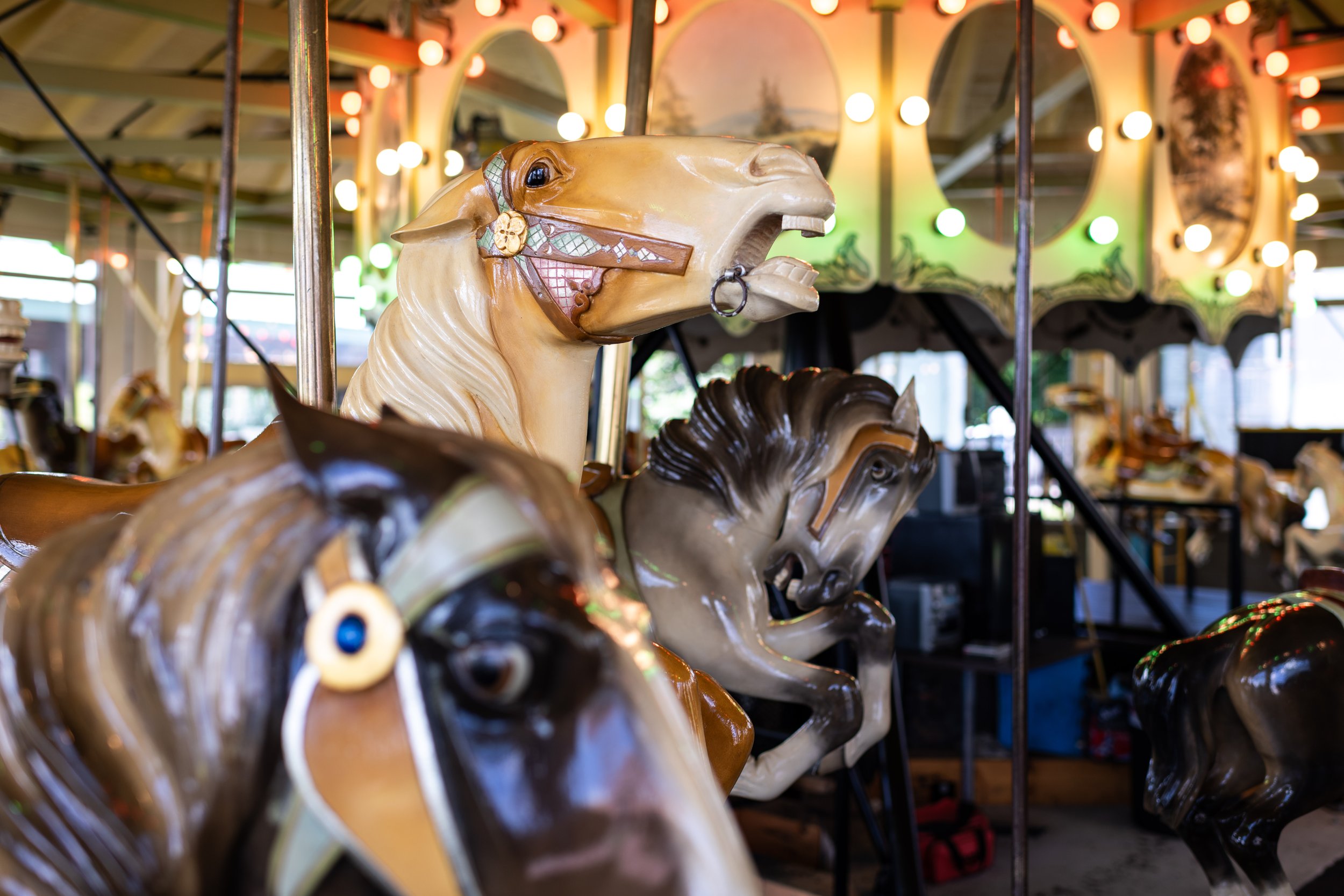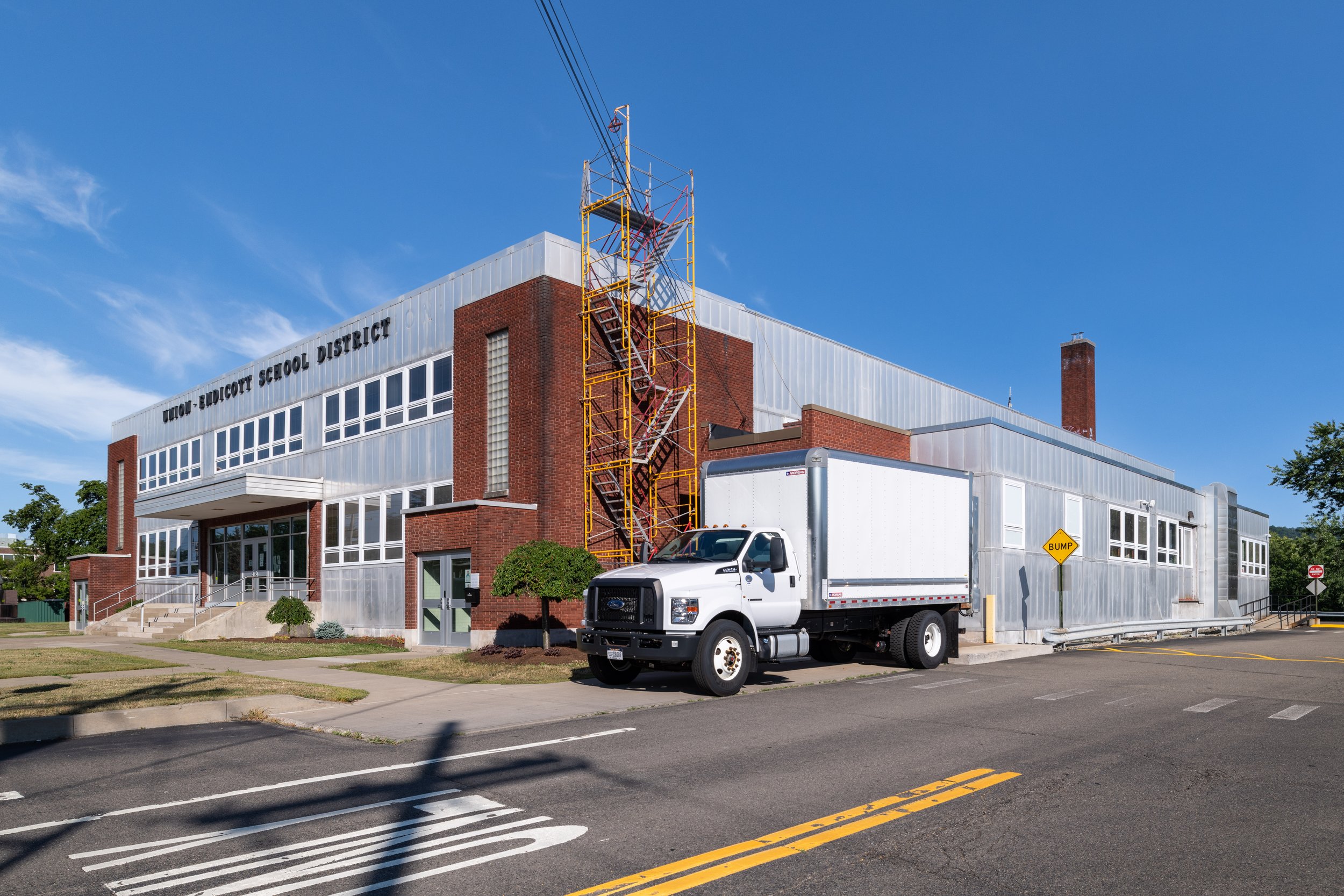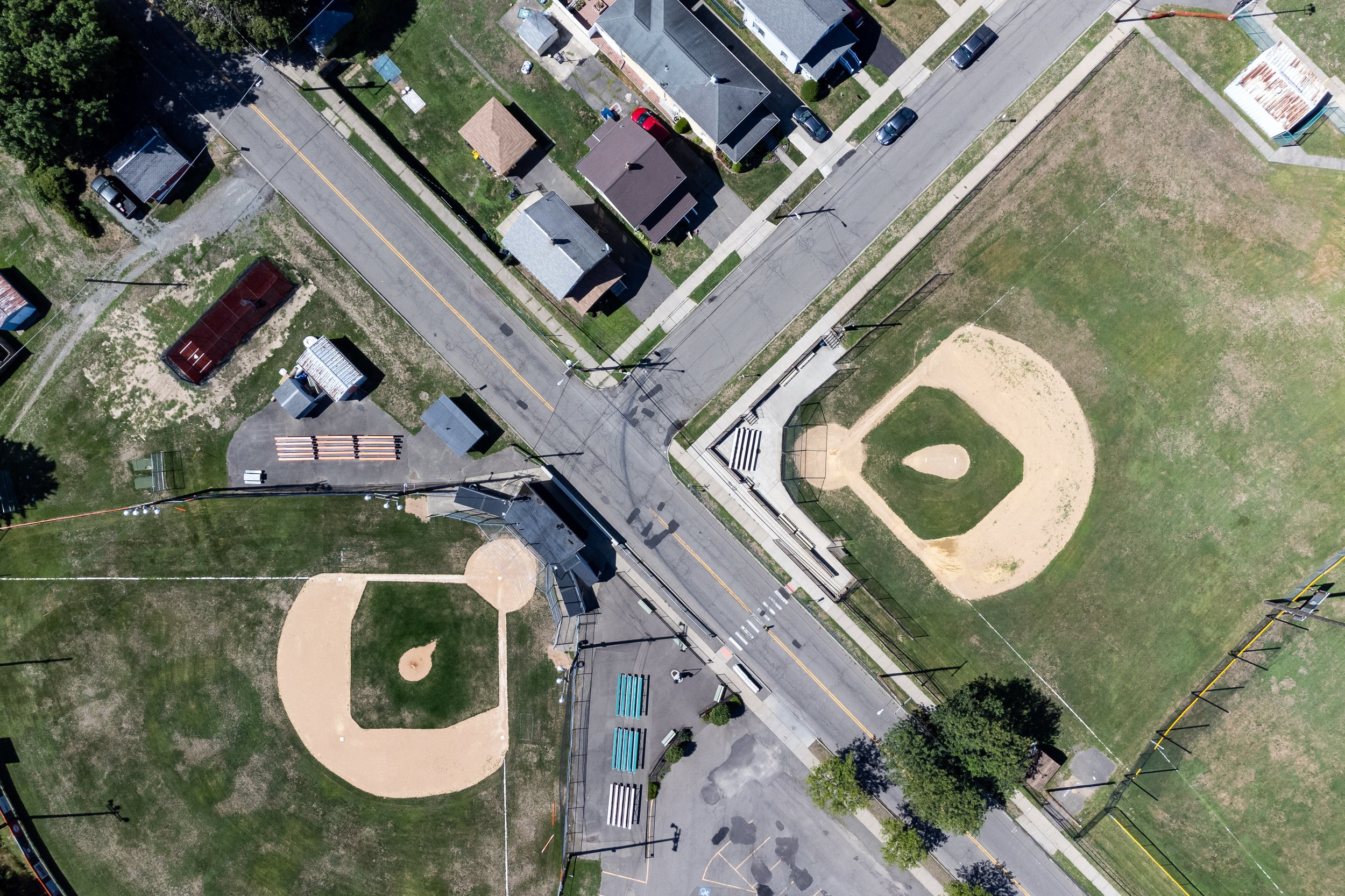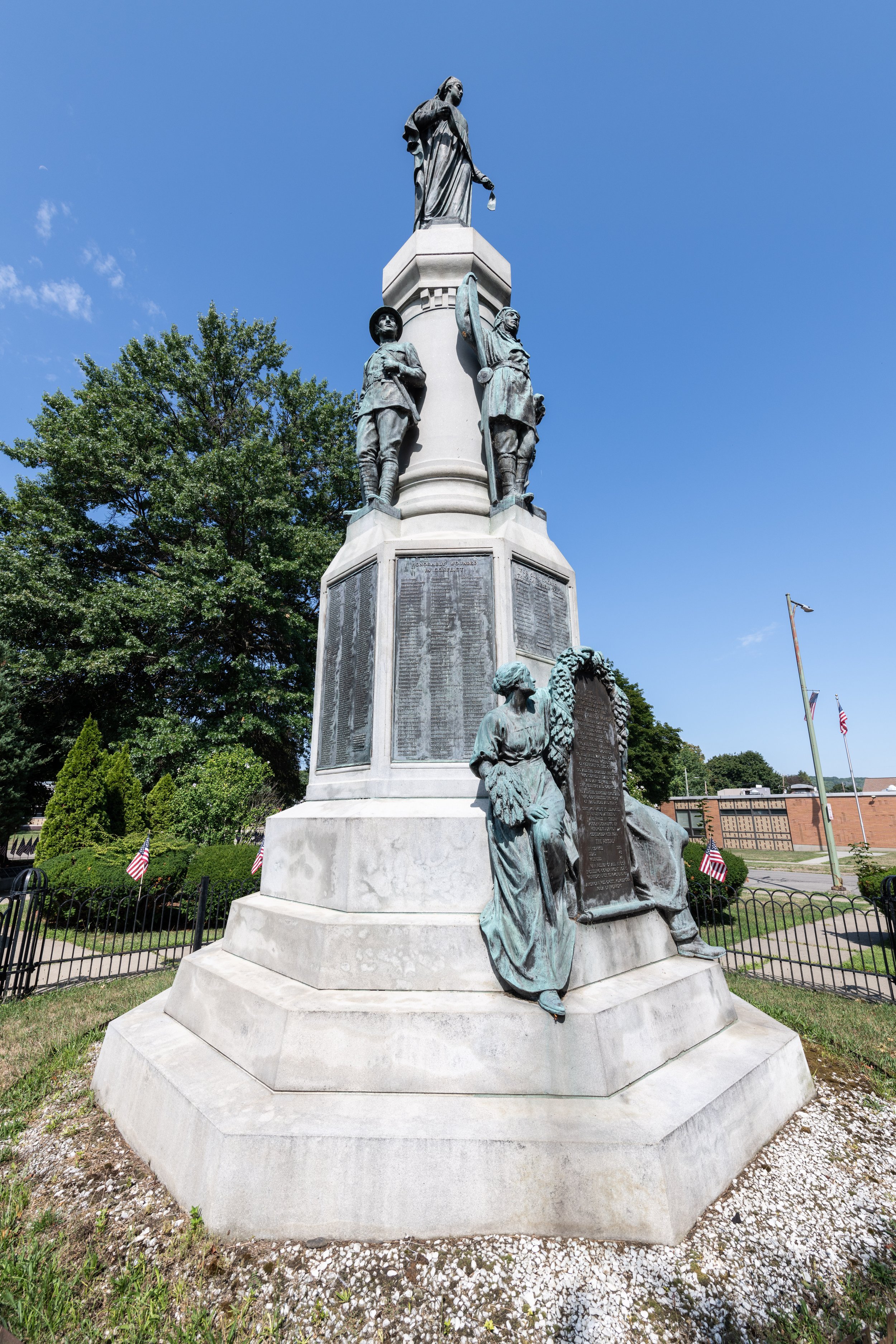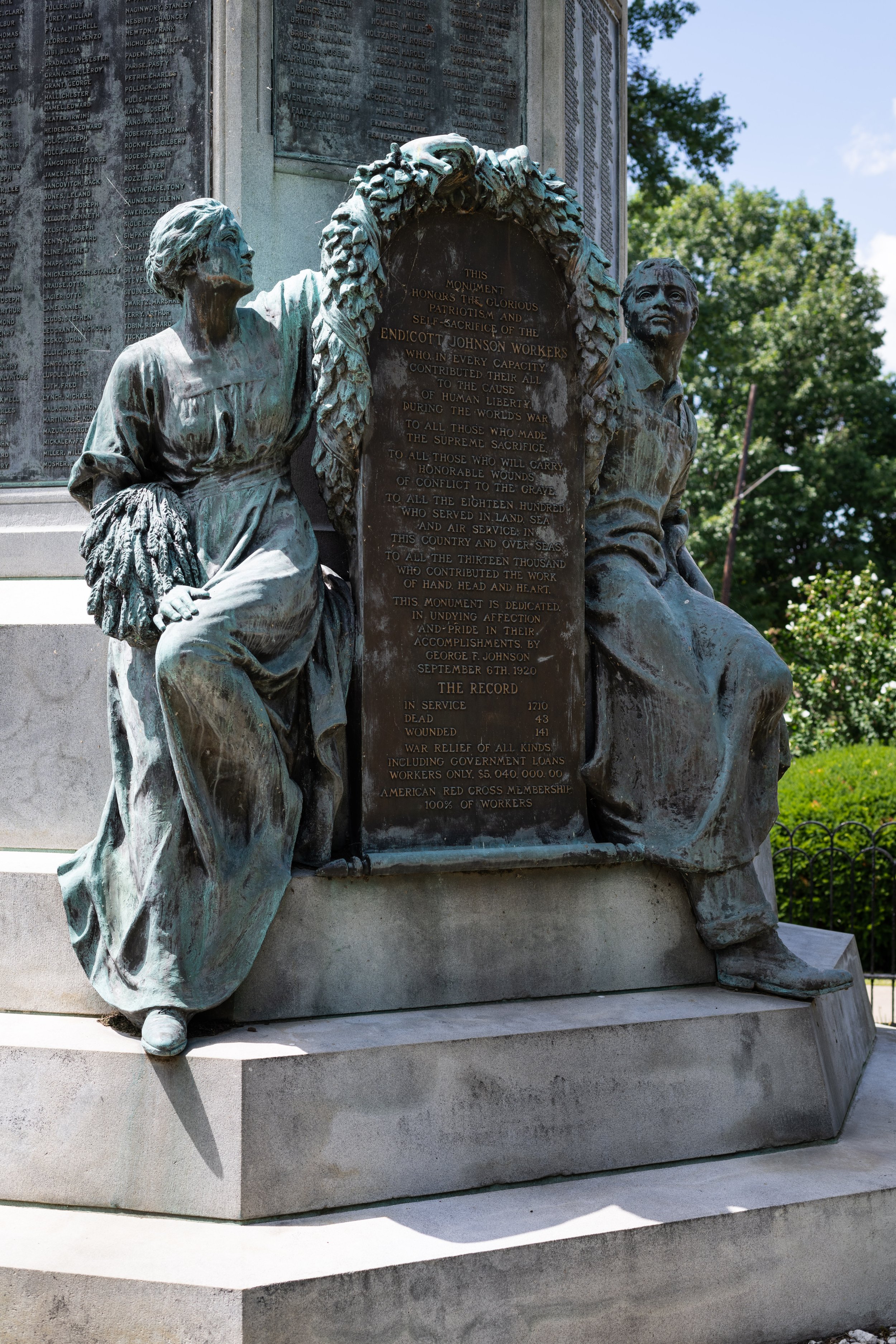Endicott-johnson Shoe Company
The impact of George Johnson’s “Square Deal” lives on in Endicott, NY & Johnson City, NY.
Much of Upstate New York was built on the success of a single industry - IBM in Endicott, Corning Glass in Corning, General Electric in Utica, and the trifecta of Kodak, Xerox, and Bausch & Lomb in Rochester. Johnson City, named for George F. Johnson, was built on the success of the Endicott-Johnson Shoe Company (E-J). A number of factors led to this success, including innovations in shoe manufacturing, the perfect storm of economic conditions, the business acumen of the Johnson family, a dedicated workforce of immigrant labor, and a “Square Deal” between labor and capital which created a shoe empire that spanned the early 1900s to the late 1970s.
Over this past year I’ve made multiple trips to the Triple Cities of Binghamton, Endicott, and Johnson City to research the history of Endicott-Johnson and document what remains of its legacy. I’ve spent hours at Your Home Library in Johnson City reading and researching the history of E-J, shot hundreds of photos, trawled the New York State Archives for long-forgotten dissertations, and poured over old maps to figure out just where everything once stood. Special thanks goes out to the librarians of Your Home Library for their help with my research, and to the New York State Archives for helping me find the information I needed. A large portion of the information presented here comes from a dissertation published in 1968 by Dr. Richard Sherwood Saul, titled “An American Entrepreneur: George F. Johnson”.
The E-J Factories
To understand the success of E-J, you first need to know a bit about George F. Johnson. He began working in the shoe business when he was just 13 years old. Working at a New England shoe factory, he rose through the ranks to manage a shoe treeing room by the age of 21. In 1881 his father, also in the shoe business, was offered a managerial position in Binghamton, NY which he intended to turn down. Instead, George F. went in his place and convinced the factory owner that despite being much younger and less experienced than his father, he was the right man for the job. 18 years later, Henry B. Endicott, the other half of the E-J namesake, offered to make Johnson a partner of his shoe company in nearby Lestershire when he saw Johnson’s management skills in action. Endicott offered George F. a $15,000 loan to buy into the partnership, and the Endicott-Johnson Shoe Company was born. Endicott died in 1920, leaving control of the company in the Johnson family’s hands.
Lestershire, renamed Johnson City in 1916, was home to E-J’s largest factories. The oldest and largest, the Pioneer factory, stood on Corliss Avenue and occupied an entire city block. The Pioneer Annex across the street produced infants shoes and shipping crates for the warehouses. The All-Sport and Sunrise factories produced ice skates, cleats, bowling shoes, and rubber footwear. Another large complex of E-J factories straddled Lester Avenue, all of which have been leveled save for the Victory Factory. Constructed in 1918, the Victory Factory stands 6 stories tall and increased manufacturing capacity to fulfill military contracts obtained during WWI. The US Government enlisted the industrial might of E-J during WWI, WWII, Korea, and Vietnam to produce footwear for US troops. 25 million pairs of rough out boots were produced during WWII alone. As the years went by and overseas manufacturing ate into E-J’s bottom line, these government contracts would act as a lifeline to the struggling company.
E-J had a production surplus in the 1920s which was oddly solved by the Great Depression - their shoes were too plain and inexpensive, and they struggled to find customers who desired more refined footwear. Warehouses in Endicott began to fill up with unsold shoes as E-J didn’t want to cut production and reduce worker’s hours. The economic collapse of the 1930s saw a surge in sales of E-J shoes, helping to clear the warehouses. While E-J footwear wasn’t the trendiest, it was reliable. By 1948, E-J had 28 factories, 6 tanneries, and 3 rubber mills which pumped out 45 million shoes per year.
So where are these factories now? The Sunrise and All-Sport factory have been repurposed into low-income housing. Relics of the past like a cable winch and an Otis elevator car from the shoe-production days are on static display outside the Sunrise factory. The Victory Factor was converted into apartments/lofts during the shooting of this project, similar to the Agfa Ansco factory just down the street in Binghamton. The Pioneer Annex was refurbished by SUNY Binghamton for its nursing program, and a new nursing school was built on the site of the Pioneer Factory across the street.
While the factories in Johnson City churned out shoes, tanneries in Endicott produced shoe leather. One of E-J’s revolutionary contributions to manufacturing was pioneering the concept of vertical supply chain integration, where all aspects of procurement and production are brought in-house to simplify the supply chain and reduce cost. Leather and reclaimed rubber were both produced by E-J workers in Endicott and Johnson City, keeping costs down and streamlining the manufacturing process. Of these tanneries and factories in Endicott, only the Upper Leather Tannery remains as a windowless warehouse. It produced heavy-grade leather for work shoes. The other tanneries and warehouses were torn down for parking lots as IBM expanded its factories to the west of N. McKinley Ave. As is tradition, I arrived just a few years too late to photograph the last remaining factory in West Endicott. Luckily Carol Highsmith beat me there in 2018 and was able to document it for the Library of Congress.
C.F. Johnson Park | Come On In The Waters Fine
The most remarkable thing about Endicott-Johnson was just how much the company gave back to the community it built. Public parks, donated and funded by E-J, could be found nearby the factories. Unlike the later IBM Country Club, the parks were available for any and all to enjoy. The largest, C.F.J Park, featured a massive pool that could hold 2,000 swimmers. The pool was sold to the city in 1966 and fell into disrepair. The park still exists but the pool was torn up in 1982 and replaced with a baseball field.
One of the more perplexing things I saw while visiting C.F.J Park was a patchwork pagoda situated off in a corner. Peeking through the stained glass windows revealed some rusted mechanical equipment, but no real clues to the building’s purpose. Thanks to an old 1977 newspaper article, I found out this odd structure was a pump house built between 1911 and 1914. It worked in conjunction with the nearby power plant as a backup to the fire systems of the Paracord and Scout factories. The pagoda incorporated materials found around the E-J factories like scraps of metal, ceramics, colored glass, brick from demolished buildings, rubber heels from old shoes, metal chains, old fire extinguishers, and even a revolver or two!
George F. Johnson was single-handedly responsible for making the Triple Cities the “Carousel Capital of the World” by donating six carousels to various public parks. The carousels are still in operation today. George F. once said that it was his way of getting even with the old days, when as a child he “was lucky to ride a wooden camel once a year”. No child would be denied the joy of a carousel ride on his watch! Carousels can be found in Ross Park, Recreation Park, Highland Park, West Endicott Park, George W. Johnson Park, and the largest in C.F.J Park. Rides remain free to this day.
The Allan Herschel Company of North Tonawanda, NY manufactured the carousels and the Wurlitzer organs that filled the summer air with cheery tunes. My favorite discovery was a message scrawled under a wooden sled of the George W. Johnson park carousel which reads “Dedicated to my sweet father who was orphaned in 1934 when this was donated to our Northside park. He lived one street over on Bermond Avenue. I’m sure he had hours of free rides. Thank you Mr. Johnson!”. A parade was held in 1934 to thank George F. for his gracious gifts to the children of the Triple Cities.
Endicott-Johnson opened the En-Joie Golf Club in 1927 after George F. heard his workers believed golf was a rich man’s game. To keep costs down, E-J sold golf balls for 25¢ (a round of golf cost the same), golf bags for 75¢, and clubs for $1. Wages at the time averaged $30 per week. He purchased a popular “lover’s lane”, Round Top Park, when he heard that police were chasing young folks out after dark. He also donated large sums of his fortune to community organizations, but he was very particular about the values espoused by said organizations. For example, he refused to donate any money to the local YMCA when he found out that membership was contingent on religious affiliation.
George F. Johnson & The Square Deal
The Square Deal was the birth of Welfare Capitalism, a simple concept in which the welfare of the workers is directly proportional to the success of the business. This was a direct outcome of George F.’s “Live and Help Live” philosophy where fair wages, medical care, housing, and reasonably prices groceries were not only the concern of the workers but of E-J management as well. At the core of The Square Deal were regular wages that workers could count on, shorter working hours, and better living conditions. E-J was the first to replace the traditional 10 hour day with an 8 hour day in 1916, leading to the widespread adoption of a 40 hour workweek. Despite the reduced hours, workers would still receive the same pay as a traditional 10 hour day. This 40 hour workweek would be adopted by other industrialists like Henry Ford and celebrated nationwide.
As part of The Square Deal, workers were guaranteed medical care through one of the most rigorous employer health plans of the era. E-J constructed three hospitals, three clinics, a convalescent home in the countryside, and purchased a cottage on Sarnac Lake in the Adirondacks for recovering tuberculosis patients. Prospective employees underwent a health screening by company doctors or nurses before being offered employment, and medical care was intended to help workers get back to the factories quickly after illness or injury. 2.5¢ were added to every pair of shoes sold to pay for employee benefits at the outset. Just like the parks E-J created, medical services would be offered to the community as a whole. Clinics were first opened in 1918 but had closed by the 1960s.
No formal pension plan existed at E-J. When an employee retired, E-J would make a decision on how much money they were given in retirement based on years of service. When applicable, death benefits would be provided to widows. Legal services were offered through the company, but were discontinued with the Great Depression and never made a comeback.
To help the workers’ wages go further, E-J opened a series of diners and markets exclusively for employees. George F. was convinced that local grocers were price gouging so he moved to cut out the middle man. E-J would buy produce direct from local farmers and sell it to employees through company markets. The “E-J Workers” brand was established to sell staples like coffee and sugar at cost. “Square Deal” bread could be had 6¢ a loaf.
When the Great Depression hit the country hard, E-J did everything in its power to avoid laying off workers. Reduced hours were eventually deemed necessary and wages were cut. To ease the impact on employees, the company’s cafeterias served high-quality meals for 15-25¢ a piece. Breakfast and supper were served 7 days a week. George F. saw to it that 250,000 meals were given away (per year) during the Great Depression to anybody who needed them, much to the dismay of the board who were concerned about E-J’s bottom line.
While the E-J cafeterias, markets, and most factories are long gone, evidence of “The Square Deal” can be seen throughout Johnson City and Endicott. Your Home Library in Johnson City was purchased, donated, and expanded on by the Johnsons. Endicott’s public library sits atop George F. Johnson’s house, which was torn down in the 1960s to build a more modern library. The En-Joie Theater in Johnson City was built in 1920 through the Johnson’s support. E-J donated $150,000 and the land upon which the Ideal Hospital was built, which is now a nursing home. The E-J Athletic Association gymnasiums, one in Johnson City and one in Endicott, were built by E-J in 1949 after delays due to economic conditions. Just like the pool at C.F.J. Park, anyone in the community was welcome to join the association. Today, the Endicott location houses the Board of Education and the Johnson City location is the headquarters of J. H. Robotics manufacturing automation.
Possibly the most impactful contribution made by Endicott-Johnson to the Triple Cities was the construction of affordable, high-quality housing for its workers. Henry B. Endicott of E-J purchased Lester Shoe Manufacturing from its owner when Lester decided the real estate game was more lucrative than his shoe business. George F. despised land speculation, and the death of a worker and his family in a tenement fire spurred the purchase of 1,400 acres west of Binghamton to expand E-J factories and build a “fair-play” community.
For anywhere from $2,000 to $4,400 and 3% interest on the loan, workers at E-J could experience the American Dream of home ownership. $2,500 would net you a six room house with an indoor bathroom, hardwood floors, and all the associated plumbing, electrical, and utility work. E-J would put workers up in temporary housing while their residence was under construction, with any rent paid applied towards the balance of their mortgage. At the height of E-J housing construction, workers would pay only $175 per year for housing which included taxes, insurance, and 5% interest on the loan. You can easily identify an E-J house today by the rough-hewn blocks that make up its foundation.
At first, these houses were built without garages. George F. was of the opinion that automobiles were nothing more than toys, and walking was both healthier and more advantageous for the average worker than throwing money at a “tin Lizzie”. Conveniently, encouraging walking also boosted shoe sales!
E-J was responsible for building the neighborhoods of West Endicott and Endwell Terrace. One lifelong resident I spoke to recalled playing amongst the noxious scent of tanning chemicals drifting from the tannery opposite West Endicott Park as a child. The neighborhoods were built up around the factories, and the environmental impact of soot from smokestacks or fumes from the chrome tanning process were ever present. Still, everyone was thankful for the work. The West Endicott neighborhood even named their local school the “George F. Johnson School”, which served the community from 1924 to 1985 and now has a small memorial in the center of West Endicott.
“Which Way E-J?” | The E-J Legacy
The E-J factories were a first stop for many “New Americans”, as George F. called members of E-J’s primarily immigrant workforce. Immigrant labor drove production capacity and created unique neighborhoods in the Triple Cities that catered to each ethnic group. Large numbers of Italian, Ukrainian, and other European immigrants worked for E-J. As word of The Square Deal soon spread to the old country, so did the promise of housing and steady work. The story goes that immigrants fresh off the boat from Ellis Island would parrot the phrase “Which way E-J?”, hoping to build a new life in the United States among the ranks of other New Americans employed by the Johnsons.
The deep community appreciation for Johnson’s commitment to the Triple Cities can be seen today as you drive into town in the form of two massive arches spanning Main Street. These arches, one in Endicott and the other in Johnson City, proudly proclaim you’ve entered the “Gateway to the Square Deal Towns” and the “Home of the Square Deal”. The arch in Endicott is slightly wider than the one seen in Johnson City as the main road was expanded and the arch widened by 15.5’ in 1995. The arches were paid for by donations from E-J employees, who were encouraged to donate $3 per worker. A total of about $40,000 was raised to build the arches, which were dedicated on “George F. Day”. The bronze tablets on each arch were cast by workers at the E-J foundry.
Running E-J was a family affair for the Johnsons. Harry L. was George F.’s youngest brother and was the general manager of E-J factories. His health failed post-WWI and he died following a nervous breakdown. A monument in his memory stood outside the E-J factories in Johnson City and was later relocated next to Your Home Library. C. Fred Johnson, namesake of the modern-day park, was a Vice President who planned the layout of Endicott and was a passionate firefighter. George W. was President of the company. Frank A. Johnson was the last of the family to helm the company and oversaw its eventual decline until his death in 1996.
There are multiple monuments to George F. and the workers of E-J throughout Endicott and Johnson City. An ornate WWI monument stands in Endicott, inscribed with the names of E-J workers who served. An E-J worker sits at the base of the monument, with figures representing different branches of the armed forces perched above. A Red Cross nurse stands atop the monument, a dedication to George F. Johnson’s sister, who died from the flu while serving as a nurse during the war. A more modest WWII monument, a plaque inscribed with the names of those who served, is posted in the same park. Just across the road is a granite plaza with a statue of George F. with his bronze shoes painted to resemble tan leather. George F. quotes ring the statue, which is dedicated to his contributions in the community and The Square Deal so many prospered under. Another George F. statue stands in Johnson City’s Recreation Park.
Similar to my thoughts I had while working on the series I shot around IBM in Endicott, I frequently wondered about what life in the community was like back when E-J was in full swing. It was difficult to find anybody left in the area that was closely associated with E-J’s heyday, as the company slipped into decline post-WWII and the majority of its workforce likely passed on by the early 2000s.
On the surface, if you ignore those giant arches, it’s easy to miss that E-J was ever the driving economic force in the area. But as you start looking closer, it’s easy to see how the impact of George F. Johnson continues to resonate today - The Square Deal arches, the libraries, lofted factories, and the thousands of houses built for E-J employees which dot local neighborhoods. Sole City Coffee in Johnson City, a place I stopped many times during my travels, is cleverly named as nod to the city’s industrial past.
Believing that the health and wellbeing of his workers was critical to success, George F. pioneered the 40 hour workweek and employer-sponsored healthcare. And the community he built was dedicated to E-J long after George F. was gone. As late as 1960, when the Glen Alden Corporation attempted a hostile takeover, the community pulled together and bought enough shares of E-J to keep the Johnson family in control of the company. E-J workers also voted down unionization efforts in the 1940s, choosing to side with George F. And his Square Deal over two unions vying to represent E-J workers.
Throughout my research it seemed that nobody had a bad thing to say about George F. Johnson. He seemed like a genuinely nice man who had more of a “community improvement” than a “profit over all” mentality we see in CEOs today, and I think that’s something we can all admire and even aspire to in our own careers.



